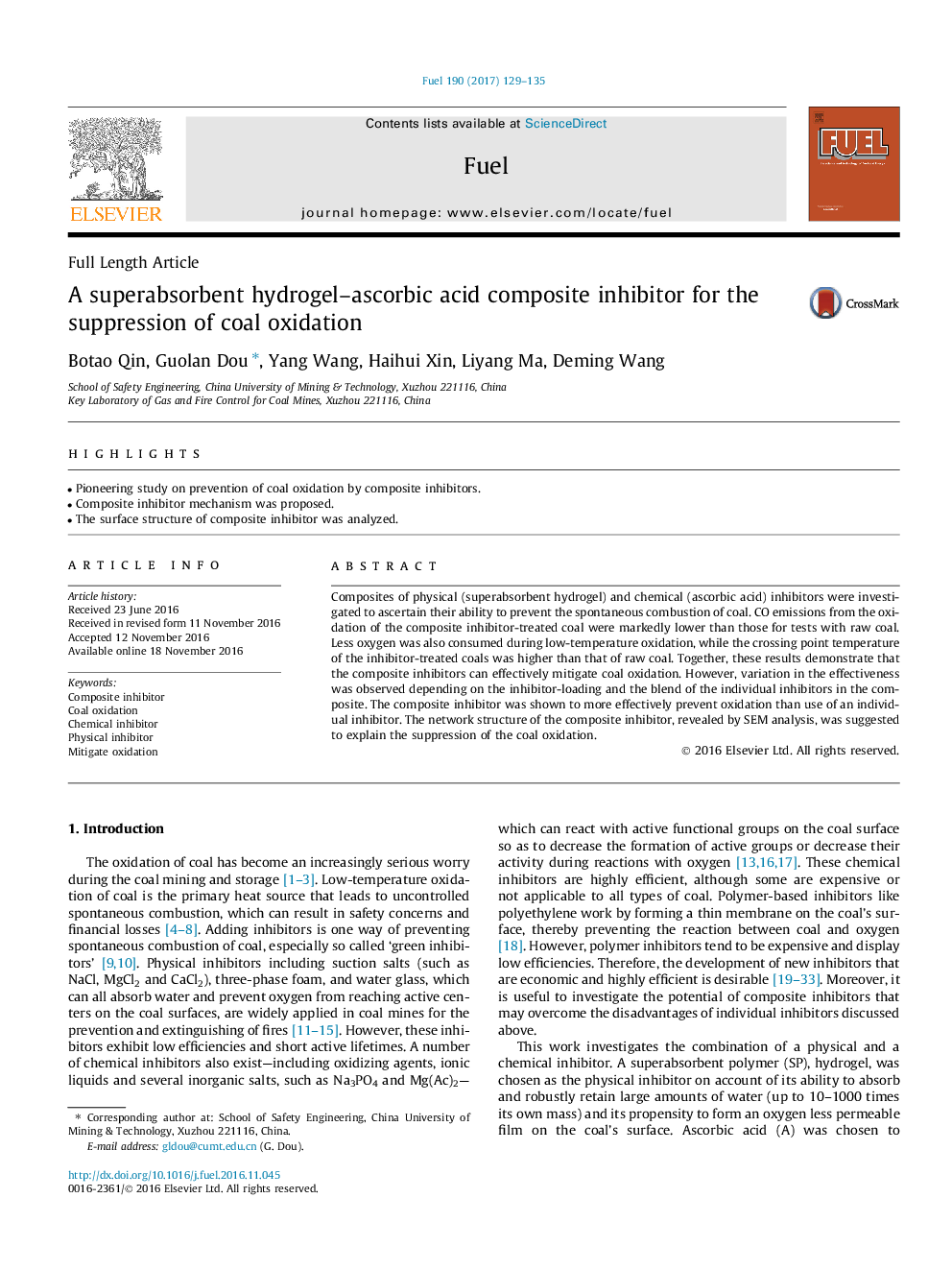| Article ID | Journal | Published Year | Pages | File Type |
|---|---|---|---|---|
| 6475551 | Fuel | 2017 | 7 Pages |
â¢Pioneering study on prevention of coal oxidation by composite inhibitors.â¢Composite inhibitor mechanism was proposed.â¢The surface structure of composite inhibitor was analyzed.
Composites of physical (superabsorbent hydrogel) and chemical (ascorbic acid) inhibitors were investigated to ascertain their ability to prevent the spontaneous combustion of coal. CO emissions from the oxidation of the composite inhibitor-treated coal were markedly lower than those for tests with raw coal. Less oxygen was also consumed during low-temperature oxidation, while the crossing point temperature of the inhibitor-treated coals was higher than that of raw coal. Together, these results demonstrate that the composite inhibitors can effectively mitigate coal oxidation. However, variation in the effectiveness was observed depending on the inhibitor-loading and the blend of the individual inhibitors in the composite. The composite inhibitor was shown to more effectively prevent oxidation than use of an individual inhibitor. The network structure of the composite inhibitor, revealed by SEM analysis, was suggested to explain the suppression of the coal oxidation.
